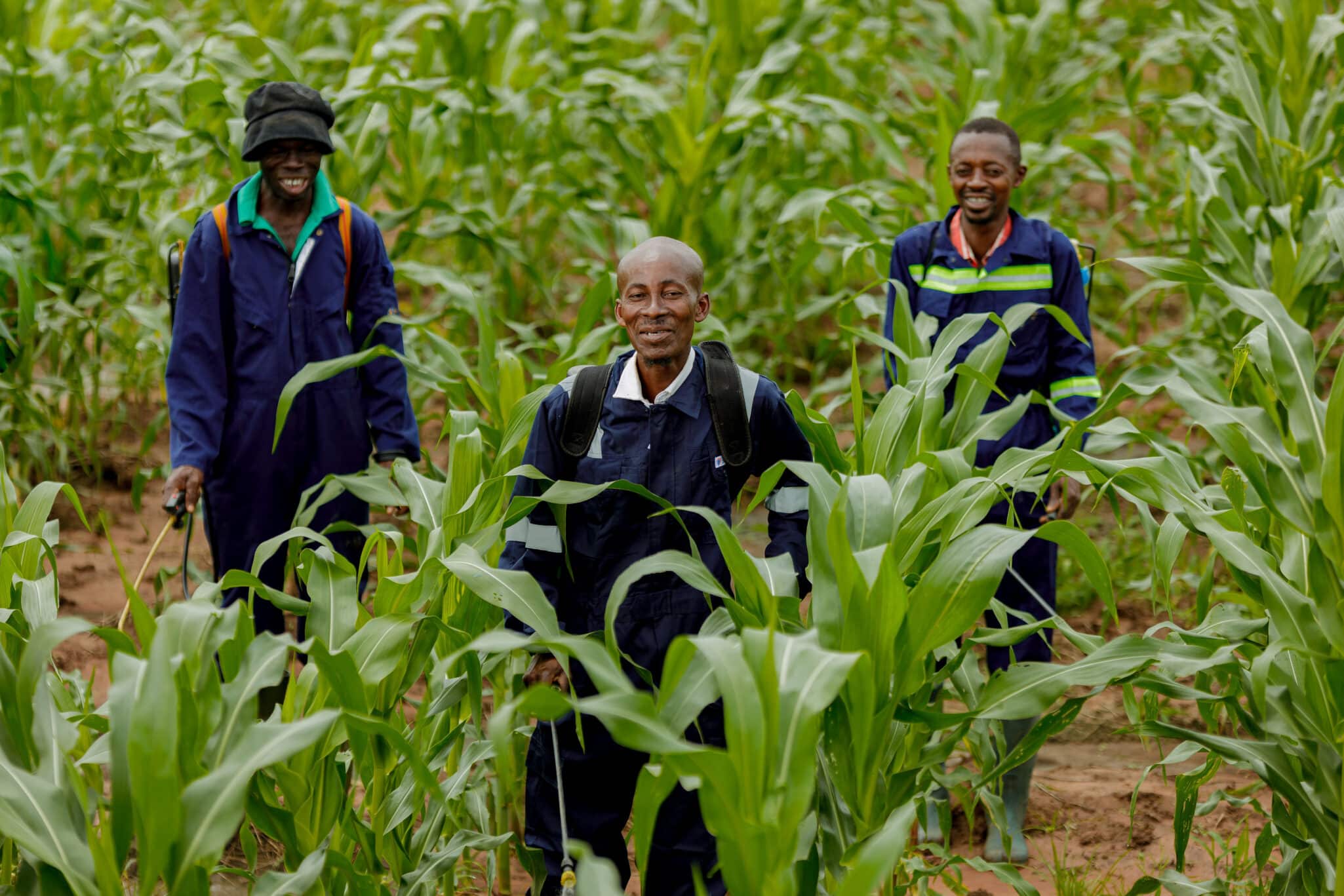Key Takeaways:
- Complete Farmer uses satellite imagery, AI, and soil data APIs to guide smallholder and commercial farmers.
- The platform offers farming protocols aligned with buyer specifications, increasing yields and market access.
- Smallholder farmers now make up over 70% of Complete Farmer’s user base, driving the company’s impact strategy.
- The business model is commission-based, with no upfront costs for farmers.
- Future plans include expanding to more African countries and building an end-to-end digital ecosystem for agriculture.
Technology Leadership in African Agriculture

Peter Yefi, Technology Lead at Complete Farmer, brings a strong background in computer science and AI, with training from Carnegie Mellon University and experience at IBM Research in Nairobi. Since joining the Ghana-based agtech company in 2020, Yefi has helped scale its technological infrastructure to support both smallholder and commercial farmers across West Africa.
“I joined because I saw an opportunity to apply my background in software engineering and AI to real-world challenges in agriculture,” Yefi explains.
Complete Farmer’s Model: Data-Driven Farming for All
From Protocols to Production
Complete Farmer differentiates itself by creating farming protocols tailored to both buyer requirements and local environmental conditions. These protocols guide farmers through every step of the growing season to meet strict market standards, particularly for export crops like chili peppers and soybeans.
“We focus on both commercial and smallholder farmers. Protocols are adjusted based on their tech familiarity and resources,” Yefi notes.
For commercial users, instructions are shared via a mobile app. For smallholders, the company deploys field agents equipped with digital tools to bridge the gap in technological access.
Remote Sensing and AI Integration
The company uses satellite imagery from Earth Observation Systems (EOS) and soil data APIs from ISD Soil to provide field-specific recommendations.
“We’ve shifted from manual sampling to AI-enabled remote sensing, allowing us to scale with reduced human intervention,” Yefi says.
Weather data is sourced via EOS, and a pilot project is underway to install local weather stations, enhancing the accuracy of agronomic decision-making.
Revenue and Impact: A No-Cost Entry for Farmers
Complete Farmer operates on a commission-based model. Farmers receive protocols, agronomic support, and market access at no cost. The company earns revenue at the point of sale, typically collecting a percentage in commission after harvest.
“Farmers deliver produce to our fulfillment centers, and we ensure market access. That’s where our return comes in,” explains Yefi.
Although precise yield improvement data was not disclosed, Yefi confirms consistent gains among smallholder farmers who transition to the platform.
Challenges and Strategic Approaches For Complete Farmer
Communicating with Smallholders
A major challenge lies in delivering complex agronomic protocols to non-tech-savvy smallholders. Complete Farmer currently addresses this via its agent network but acknowledges the limitations in scalability.
“The goal is to reduce human intervention while maintaining compliance and traceability,” Yefi says, adding that research is ongoing into more scalable communication tools.
Development Partnerships and Future Projects
Complete Farmer is currently exploring a partnership with the International Finance Corporation (IFC) to develop financial tools tailored to smallholders. Rather than disbursing cash, the system will assess input needs and provide resources directly, supported by robust data tracking.
“This project is meant to close the financing gap that blocks smallholder expansion,” Yefi explains.
Looking Ahead For Complete Farmer: Food Sovereignty and Digital Infrastructure
Yefi sees a major opportunity to unlock Africa’s agricultural potential through mechanization, precision farming, and broader application of AI technologies.
“Only 24% of Ghana’s agricultural land is cultivated. The opportunity is enormous,” he notes.
Governments and development actors are encouraged to view African agriculture as a scalable investment opportunity.
Vision for 2035: A Plug-and-Play Agri-Ecosystem
In the next 5–10 years, Yefi envisions Complete Farmer expanding into at least 10 countries across Africa, offering a unified digital platform for all actors in the agri-value chain—from buyers to logistics providers.
“We’re building a system where everyone can plug in—farmers, input suppliers, mechanization services, and retailers,” he says.
The ultimate goal is food sovereignty through inclusive technology that ensures traceability, market access, and fair compensation across the agricultural ecosystem.
Conclusion
Complete Farmer’s model integrates advanced technologies with real-world farming needs. By prioritizing both yield and impact, especially among smallholders, the company is forging a path toward sustainable, scalable, and equitable agriculture in Africa. With continued investment and strategic partnerships, its vision for a continent-wide digital agricultural platform is well underway.


